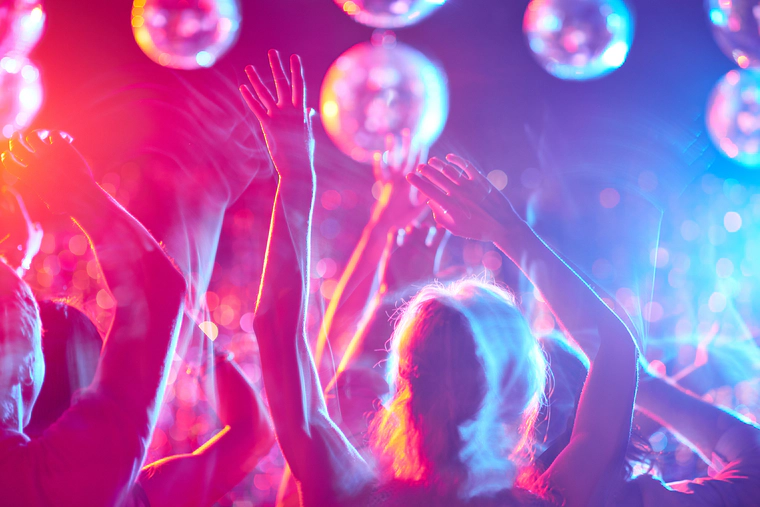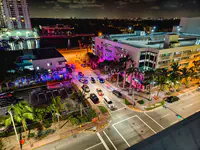Club Drugs Show Rising Usage Across the United States
The harm from abusing club drugs is often overlooked, but they can cause serious consequences. The drugs pose a serious risk of addiction and have been known to cause unexpected deaths in users.

In addition to learning about the different mind-altering substances experimented with in America, it’s important to monitor usage trends and statistics surrounding such substances. Knowledge of drug popularity amongst users and general statistics allows people to understand what type of drug use to be on the lookout for. That knowledge empowers individuals to help their loved ones should such drug use occur within one’s family or friend group.
Defining Club Drugs
Club drugs refer to a category of mind-altering substances that people use when they go to dance clubs, parties, raves, or music venues. Club drugs are sought for the mind-altering effects that they have, effects which rave-goers and festival attendees say enhance the experience of dancing, music, lights, social interaction, and sexual activity. Unfortunately, such drugs can be addictive, harmful, and even deadly.
Club drugs include:
- MDMA
- Ketamine
- LSD
- GHB
- Rohypnol
Methamphetamine and cocaine are sometimes referred to as club drugs for the frequency of their use in club settings. However, such substances are usually classified as stimulants and are often used outside clubs, festivals, and rave environments.
The Drug Enforcement Administration1 is a good resource for learning more about the different types of club drugs.
Club Drug Usage Trends by Age

Beginning with high school-age students, fewer than 5% of teens use club drugs. However, young people’s perceived disapproval of such drugs has been falling since 2013, suggesting that usage rates might increase in the coming years.2
Club drug usage is also relatively low among college-aged youths. However, experimentation trends begin to increase among adults between the ages of 23 to 26, and usage rates in that age bracket are higher for men than for women.3
By the time an American adult reaches 26, there is a 20% chance that they will have used club drugs at least once in their lifetime. After age 26, the odds of an individual using club drugs begin to decline, especially if they have not used such substances.4
Ketamine Usage Statistics
To determine the scope of club drug usage, it also helps to examine statistical data for individual club drugs. For example, one paper published in a 2021 issue of the American Journal of Public Health found that non-medical ketamine consumption increased between 2006 and 2019. This finding was concerning, given that ketamine has historically been a rare drug of choice for users.5
The paper found that ketamine usage among young adults reached its peak in 2019, with close to 1% of young people using the drug that year. The paper found that instances of ketamine drugs being seized by law enforcement also increased, with such drug busts reaching a peak in 2019.
The increase in ketamine usage and seizures may be connected to recent approval by the Food and Drug Administration to make ketamine available for psychiatric use in humans. In 2019, the FDA approved using a nasal spray version of the drug as a fast-acting tool to combat depression. Before that, ketamine had only been approved for veterinary applications, due to its high risk for misuse by humans.
Cocaine as a Party Drug

While cocaine is usually defined as a stimulant, this substance is often present in nightclubs, raves, music festivals, and dance parties. In fact, one paper that sought to determine the demographics and usage trends of club drug users found that most people who experiment with club drugs also use cocaine.
A paper published in Public Health Reports surveyed 400 18 to 29-year-old club drug users. Survey participants reported a wide array of club drug experimentation, yet almost all participants (90%) reported being regular cocaine users.6 Furthermore, 58% of participants met the criteria for club drug dependence, and 61% reported that cocaine was the primary drug causing them significant problems.
Club Drug Usage Rates by Geographic Area
Beyond examining specific club drugs, it’s also important to assess the prevalence of club drugs within certain geographic “scenes.” Logically, parents of a teen or young adult might have more reason to be concerned about their child experimenting with club drugs if they live in a major urban area than if they live in a sparsely populated rural community.
To that point, one paper published in a 2006 edition of the Journal of Urban Health sought to determine the rate of club drug usage among young adults who frequented nightclubs and raves in New York City. According to a survey of 1,914 New Yorkers between the ages of 18 and 29, 70% of respondents said that they used club drugs at some point in their lives, with 22% reporting they had used such drugs recently. The survey was constrained to asking participants about their usage patterns with ecstasy, ketamine, cocaine, methamphetamine, GHB, and LSD.7
Key Takeaways
While the overall usage of club drugs among Americans remains relatively low, such drugs do pose serious health risks, and usage trends seem to be on the rise, particularly for adults in their 20s and especially for ketamine use. A growing interest among users in consuming cocaine alongside other club drugs also seems to have complicated usage trends. Finally, certain factors like urban concentration may put young people at greater risk of exposure to such drugs.
Club drugs pose a risk for dependence and addiction and they are dangerous to physical, mental, emotional, and behavioral health. Thankfully, we can treat club drug addiction through residential drug rehab programs. The family members and loved ones of individuals who are using club drugs should seek the help of drug treatment centers, as overcoming an addiction to club drugs often require professional help.
Sources:
-
Monitoring the Future. “Key Findings on Adolescent Drug Use.” MTF, 2021. monitoringthefuture.org ↩︎
-
Monitoring the Future. “Demographic Subgroup Trends Among Young Adults.” MTF, 2021. monitoringthefuture.org ↩︎
-
Monitoring the Future. “MDMA (Molly, Ecstasy).” MTF, 2021. monitoringthefuture.org ↩︎
-
AJPH. “Trends in Ketamine Use, Exposures, and Seizures in the United States up to 2019.” AJPH, 2021. ajph.aphapublications.org ↩︎
-
NCBI. “Club Drug Use and Dependence Among Young Adults Recruited Through Time-Space Sampling.” NCBI, 2009. ncbi.nlm.nih.gov ↩︎
-
NCBI. “Prevalence and Predictors of Club Drug Use among Club-Going Young Adults in New York City.” NCBI, 2006. ncbi.nlm.nih.gov ↩︎






 ®
®